A full life as a Wind Turbine Technician
Michael Martin works for Vestas in Minnesota in the USA. A former technical writer he shares his life as a wind turbine technician here.
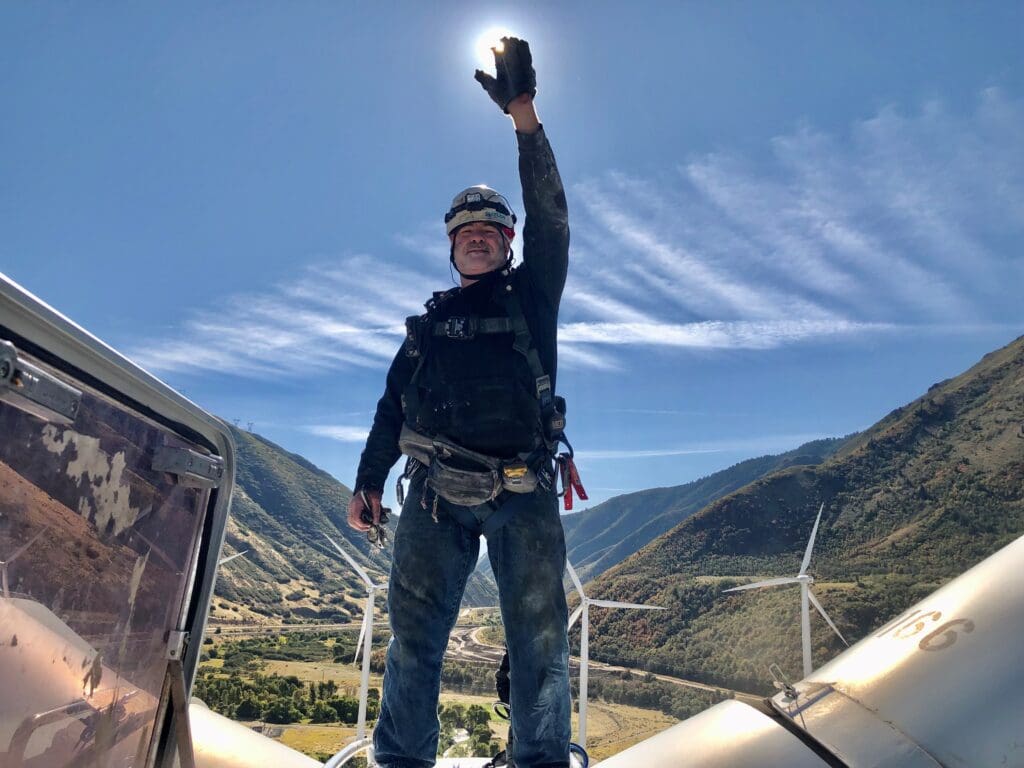

Michael Martin – Life as a Wind Turbine Technician and Technical Writer
Background
What attracted you to working with wind turbines?
I was working up in Minneapolis, Minnesota as a technical writer in the 1990s. Renewable energy is my second career/calling. I am generally older than any of my co-workers.
After the events of September 2001, pretty much all business stopped, and my contracts dried up. For the previous eight years, I had been working up in the Minneapolis/St. Paul metro and travelling down to my wife and kids at the weekends. I fixed up my house in the Twin Cities, sold it, and moved permanently to the small town of Tracy, Minnesota. Selling a house gives you a bit of cushion, and I had time to think.
There were very few jobs for technical writers in southwestern Minnesota at the time. Remote work was only for coders working on legacy systems. I was at a crossroads. No more cube farms (large offices divided into cubicles for individual workers) for me.
I wanted a job that would directly add to the good in the world. Plus, I wanted to do a job that I could tell my grandchildren about. I wanted to go to bed physically tired and sleep the sleep of the just. That’s why, I decided to pursue a career in renewable energy.
Career and life as a wind turbine technician
After a short time working in a local university, I went to work for a wind turbine rotor blade plant. I soon became a quality control technician and worked there until it started layoffs and closed.
After that I worked for a battery backup start up, custom designing, building, and palletising battery backup systems, including hybrid grid tie solar systems. I worked there until it closed its doors. They were pioneers in a niche market. Before their time, really.
I leveraged my knowledge of blade design and construction and went to work for a travelling blade repair crew. That is when my life changed, and I joined the brother/sisterhood of wind turbine workers. I was older than most of my colleagues, but I loved it.
Later, I tired of life on the road, and made the jump from travelling blade technician to OMS (operations, maintenance, and service) technician. I have a long commute, but I am home every night.
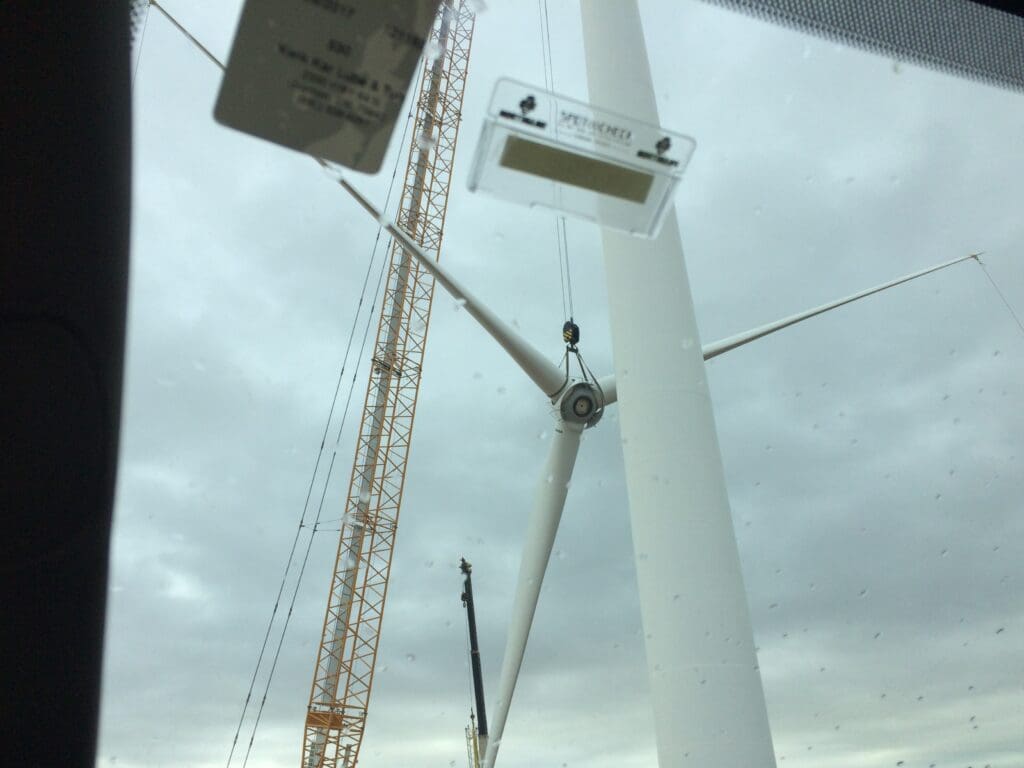

Balancing careers
You are also a technical writer and manage rental properties. How do you balance these three careers?
What is this word “balance”???
All kidding aside, I haven’t taken any new technical writing contracts for a while, although I do write the occasional presentation, procedure, and technical specification in the industry. My wife is the main property manager, and I contribute the funding, brute labour, documentation, and website maintenance. We try to be model property managers.
Typical day in your life as a Wind Turbine Technician
What sort of shift system do you work?
We work ten hours a day, four or five days a week. It depends upon the weather, and where we are in our service schedule. We also rotate on-call shifts.
What’s your typical day like?
I am on a team responsible for the maintenance and repair of 120 wind turbines.
We start the day at 7 am, and we review the past day’s work, and discuss the current day’s work.
After that, we do some light stretching. I always thought that morning stretching was something they did on Japanese car assembly lines; but now, as what many people refer to as an industrial athlete, I find it immensely helpful.
Once we have stretched, we load our trucks and drive out to the turbines. We climb the turbines, raise our supplies by crane, and repair any malfunction, and replenish any consumable.
Above all, we leave a turbine cleaner and more functional than it was when we first climbed it.
We also travel around and restore “downed” turbines to service. We call it troubleshooting.
Time in the field
How much of your time is spent ‘in the field’ – working on the wind turbines?
It depends on what we are doing.
If we are performing service, then probably around 80-90% of our time is spent “uptower.”
If we are troubleshooting, we usually fix what is keeping a wind turbine from producing and then tell the site owners what we did. Generally, a troubleshooting team will climb multiple towers per day, and do more diagnostics than a service crew.
How much of your day is spent on checking data and admin?
Checking data and administration are a core part of every job. We have limits for wind and weather, and on days when the weather is borderline, we monitor the weather constantly. We also monitor the entire park. In short, we use data to determine our day, and we account for the materials we use.
Travel in your life as a wind turbine technician
How much travel do you do?
In my role as an OMS technician, I have an hour commute every day when the weather is good. Occasionally we travel to other local sites and fill in if they are short staffed.
In my past role as a blade technician, I travelled 100% of my time, with a week off after 4-6 weeks. It paid better, and I drove through or worked in about two thirds of the continental United States, and once in Hawaii. Even with the great pay and amazing sites, I did not get to spend time with my spouse and family. My wife and my family are my anchors, and I think the cut in pay was worth it.
Weather
How much does the weather affect you?
The weather determines what kind of day my team and I have. Bad weather can keep us out of a turbine. Still, we stay alert for windows in the weather.
We work throughout the year. Working in high heat and humidity is challenging, but the greatest weather-related challenge is working in the cold. When it is sub-zero, we have to carefully plan what we will wear. If the turbine has been down for a time, the gearbox and oil has cooled, and lubricants are thick and are harder to get into the turbine. If you dress for the cold, you have to pay attention to how much you sweat.
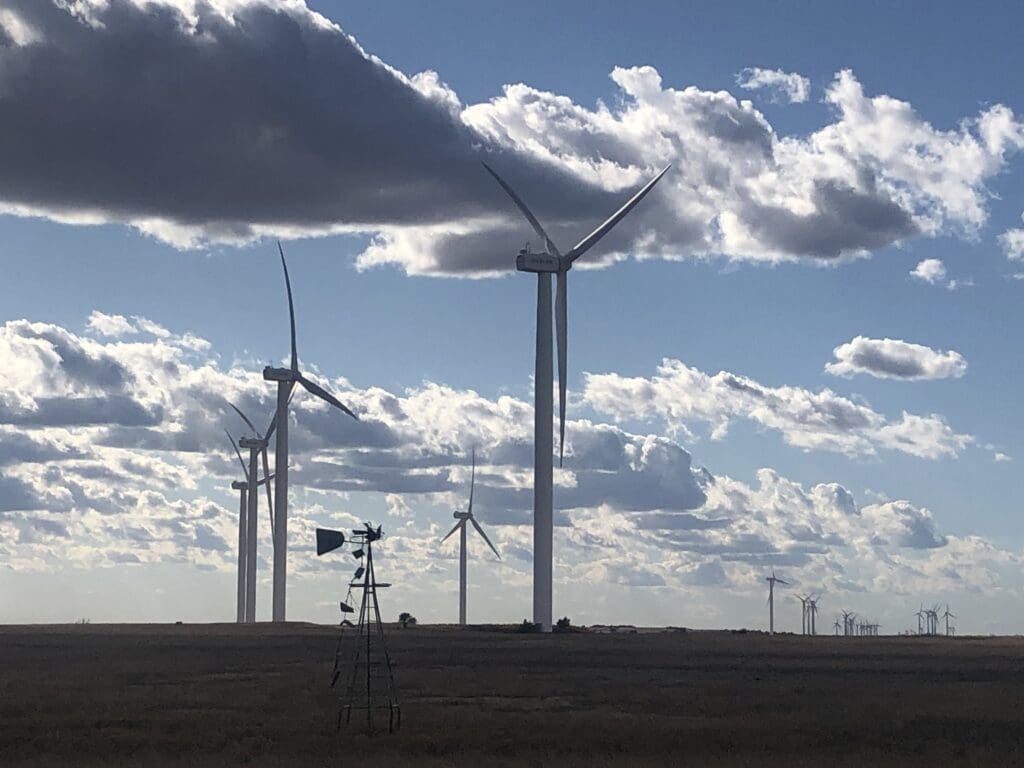

Parts of the wind turbine
What are the parts of the wind turbine that you work on?
In my current job, we mostly work in the nacelle, hub, and the yaw deck, with the occasional blade inspection thrown in.
We try to cross-train on every part of our job. Some jobs require advanced LOTO certifications, but successful technicians are in a continual learning mode.
I have worked on about seven different platforms, and you can definitely see the evolution of the industry, right there in solid steel. Things are getting easier to work on, safer, and exponentially more productive. The smallest was a 1.25 MW turbine, and the largest was a 2.3 MW turbine. Vestas just came up with a 15MW turbine. I would love to see it.
Most challenging part of life as a wind turbine technician
What do you find most challenging about the work?
In my current role, it is the weather. When I was a blade technician, if it was too cold, our chemicals would not perform correctly. We had to be innovative when we were close to the chemical’s minimum operating temperature. There was a definite limit to what we could do.
As an OMS technician, I work in any type of weather that is within our safety margins. This can be physically taxing and requires more strategy and forethought.
What has been your most difficult job so far?
As a blade technician, I had plenty of jobs where I performed tasks that would have made my ‘technical writer self’ give up and go home. The thing is, once you start to perform a job, the doubts and difficulties fade away, and it becomes a challenge to overcome. Most of the difficulty was in my head. You build resilience in this job.
Have you ever arrived on site and found that it’s been much easier than you expected? For example, that you just needed to make a small adjustment.
Maybe I am a pessimist, but every job has been easier than I expected. I think that is a result of planning for what could go wrong. Every task is easier once you get up the tower and start working on it.
I try to keep in mind that every turbine (especially later models) is designed to be worked on. Plus, some engineer or team of engineers put a lot of time and effort into making it as easy as possible within the design constraints.
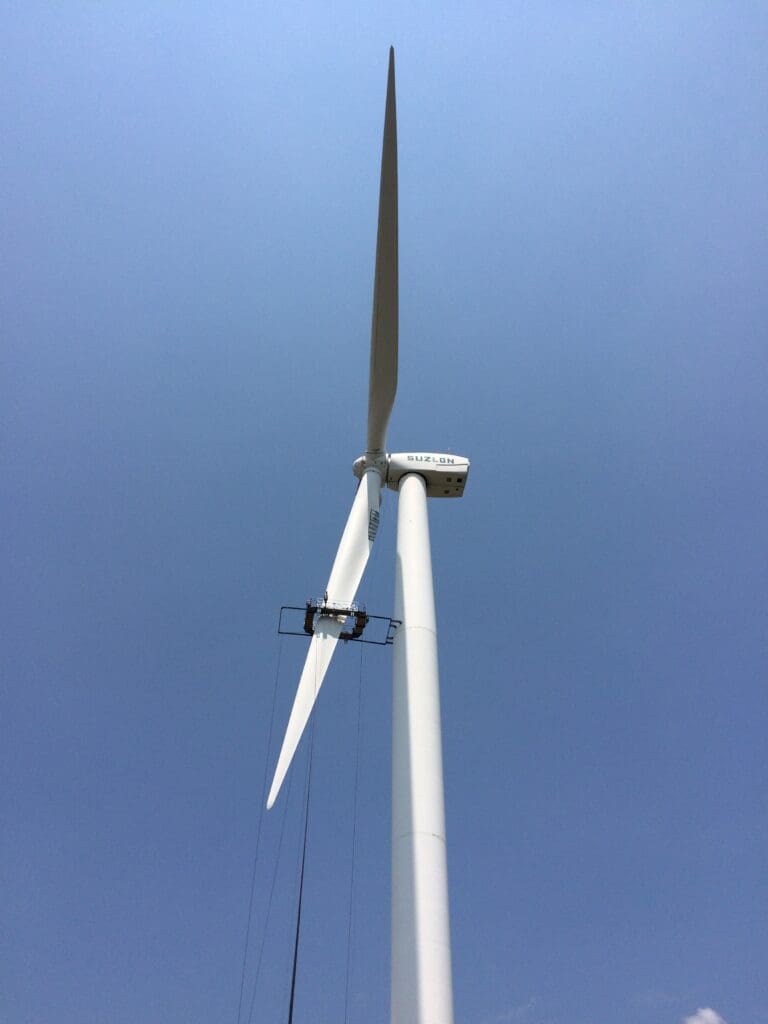

Making a winner
What sort of person makes an excellent Wind Turbine Technician?
An excellent wind turbine tech is punctual, willing to learn, and has a base level of resilience. They also have to be trustworthy, because they are in a team, and the other people have to be able to depend on them for rescue and safe working practices. Optimism and friendliness are also important.
How important is overall fitness?
Since the advent of climb assist and lifts, climbing the average of 275 ladder steps every day is much less challenging. That does not mean that it is easy. For new techs, the first month or so is challenging, but a body adjusts.
My first gig was on a farm with 43 turbines and no climb assist. We inspected at least three of them per day. I think I gained about 15 pounds of muscle on my shoulders, back, and chest that year.
Warming up, stretching, body positioning, and economy of motion will make your career much easier, and you will last longer in the business.
Even with climb assist, most new technicians will bend and twist their bodies in new and different ways. They will get much better at tolerating temperature ranges, and their back, chest, core, arms, and legs will get much stronger.
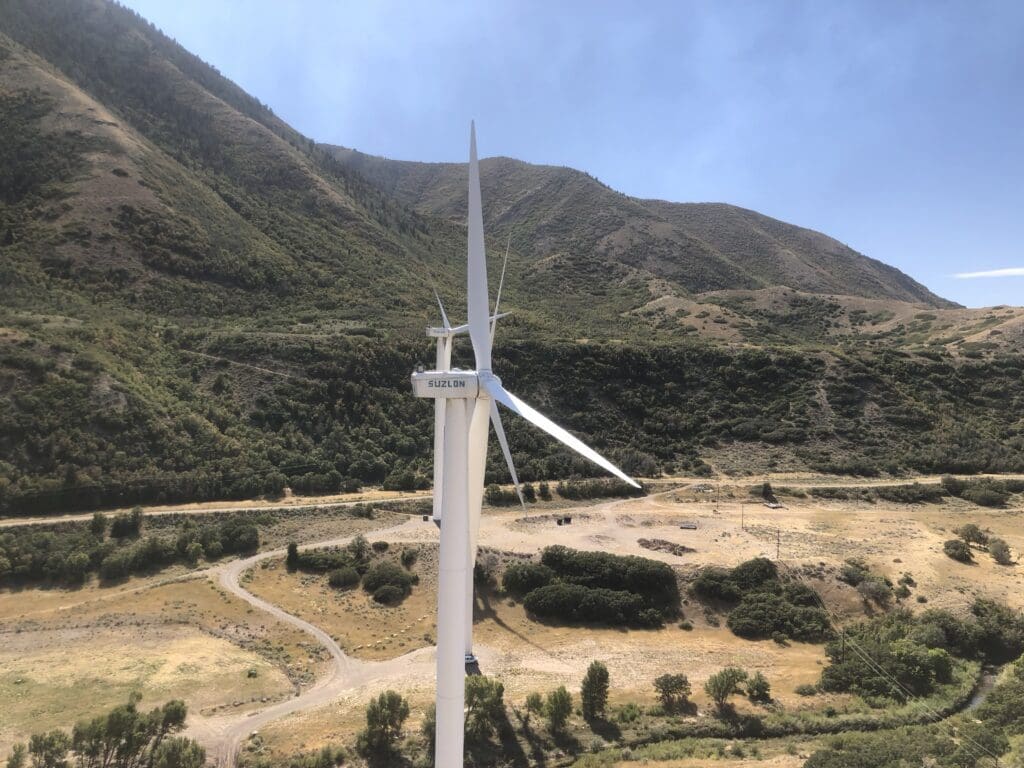

New people starting life as wind turbine technicians
What advice would you give to someone who has just started their first job?
I would give six pieces of advice:
Be on time and prepared every day.
Be kind to your body when you are done for the day.
Try at least one new task every day.
Being positive makes for easier days.
Be ready for the best sleep you’ve had in a while.
Poop early. 🙂
How quickly do you get used to working at height?
It depends upon the person.
I think the wind turbine schools offer some kind of early heights experience these days. I’d recommend climbing as soon as you can, just to see your initial level of comfort. Some have very little trouble. Most get acclimated.
The key thing to know is that all wind turbine companies mandate fall arrest equipment, harnesses, and all sorts of gates and structures to keep you safe. While you might be working in high places, you will have the training and equipment to be 100% tied off at all places where you could fall.
Apart from a strong technical background, what are the three most important skills to have?
The ability to climb at least one tower a day.
A resilient and curious spirit.
The ability to work with a team. Remember, you are joining a brother/sisterhood of height workers, and when you are up a tower, you need to have everyone’s back.
Technical writing
Can you give examples of the sort of documents you have written?
In the 1990s I worked in the medical device, defence, medical scheduling, and online test delivery sectors. Sometimes it was user manuals and procedural documentation, sometimes it was organisational dreck, and other times it was engineering documentation.
During my time in the wind industry, I have done a few engineering and procedural pieces, mostly when I was recovering from surgery. Also, along the way I created PowerPoints that could be presented for task-specific training for our specific teams. These met with varying levels of success, depending on the receptivity of management.
I also streamlined a couple of forms we used every day on our work phones. It’s Ironic that those tweaked forms probably saved more labour hours that anything else I’ve written.
Do you write at a certain time of day?
When I was in an office, I had no set time, though the late morning/early afternoon were the most productive.
Writing techniques
What do you do if you experience ‘writer’s block’?
In regard to technical writing, I never really had it. You are writing about concrete things, and the only creativity you have is constrained by your subject and audience. Fiction is different. Writer’s block is a real and hairy beast when I am trying to create. I find exercise and early rising with no media access can jog something loose. I have to be bored enough to wool gather.
How key is clear concise documentation for the safety of any industry?
It is not only one of the keys to a corporation’s success, if they don’t have the documentation, they are in legal jeopardy. Every company has to have a safety regime, and a key to that regime is its documentation. In heavy industry or power generation, lives depend on it. In wind there is a strong safety culture, and good, accessible documentation helps build and maintain that culture.
Training
You are also involved in teaching. Can you give examples of this?
I’ve not had a formal role in teaching. However, early on, after I left the Twin Cities and my formal job as a technical writer, I ran an html based collaborative writing project for an elementary school young writer’s workshop.
Most of my teaching in the wind industry has been hands-on, helping new employees to grind, or laminate, or other things rotor blade related. People have also needed help with reports and documentation.
Also, as I mentioned above, whenever I ran into a hard task, and there was no documentation I could find on how to do it, I would make a document. It was usually a PowerPoint, that would catalogue different defects, or methods to use that would make life easier.
Every time I come across inadequate documentation, or a complete lack of it, it rankles the technical writer in me. (I am always suspicious of a person using “utilise” in a sentence. I mean really, is there a reason for a three-syllable synonym for “use?”)
What are your strategies when someone is having difficulty understanding?
Not everybody learns in the same way. Writing or presenting with lots of pictures with captions or callouts, or even short video clips can change the game.
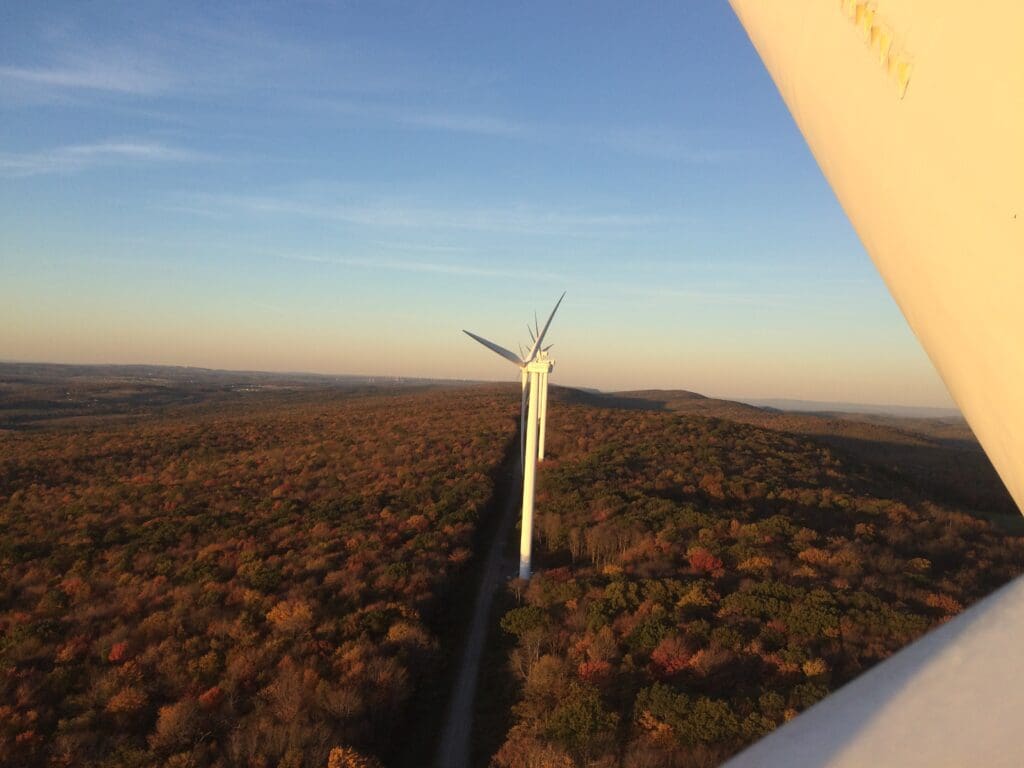

Future of renewable energy
This is a field you are passionate about. What do you see as the future of renewable energy?
As the electrical grid infrastructure doubles in capacity to accommodate the shift from fossil fuels to clean power, I am hoping we do not just blindly scale up the original electrical infrastructure, but actually put some thought into how we want our power to be supplied. I would like to see more regional resilience, while increasing our ability to prevent blackouts and brownouts across the whole country.
I think developing a strong micro grid technology is key to using and distributing power, particularly in rural areas. One way would be to have at least 5% of the houses in each community with a healthy amount of solar and battery backup. This could be coupled with the ability for the local utility to “sip” from the banks during peak demand. We would create local clean energy and increase resilience to prevent power surges and blackouts. You could begin by providing school systems or fire houses with solar and battery banks. It would be a great start, and a boost to public well-being in times of climate change and weather disasters.
Wind power
How do you think wind power will develop?
Because of the dramatically increased funding for renewable energy by the US government, things are going to fundamentally change. Competition for available wind site land will increase, and farmers all along the Midwest, from North Dakota to Texas along the buffalo ridge and through the wind corridor will benefit from higher wind leases. Power lines will be going up in new places to supply power from rural areas to population centres.
In six years, there will be a wind farm within biking distance of my house.
Offshore wind is opening up right now, and for the starting offshore workers, this will be a great opportunity to get in on the ground floor.
Globally, more and more wind turbine workers will be earning a good wage and helping their local economies. More local tax revenue will make it to every area where the wind turbines are producing, and more smart and able young adults will stay in small towns, instead of being gobbled up by the cities.
And, God willing, the air will get cleaner, carbon use will be drastically reduced, and our descendants’ time in the global warming barrel will be lessened.
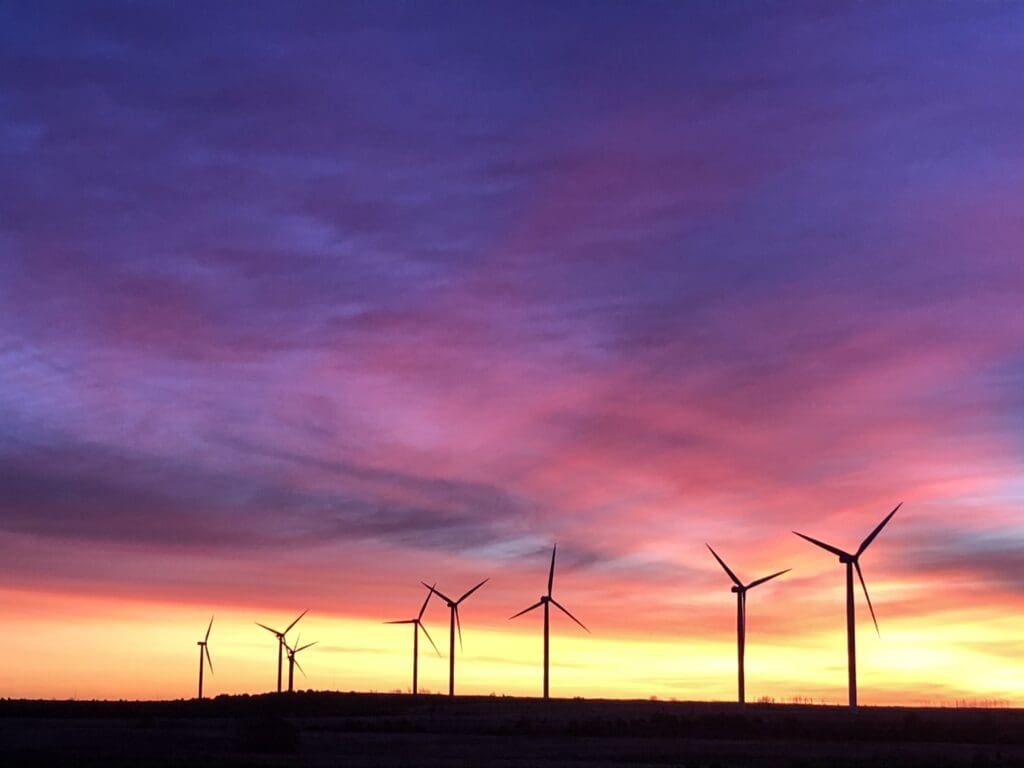



Responses